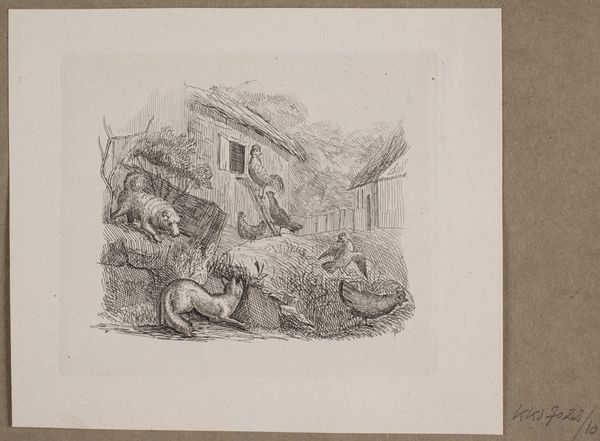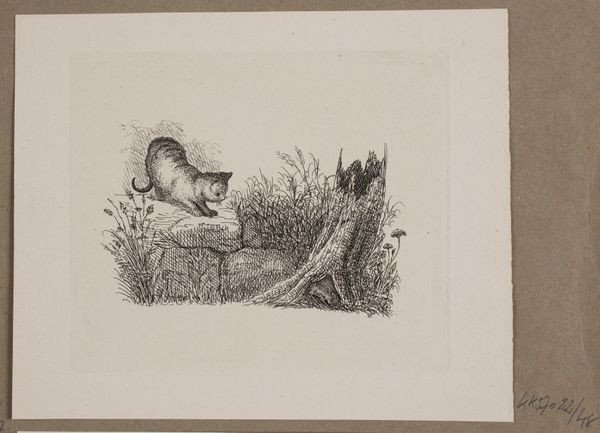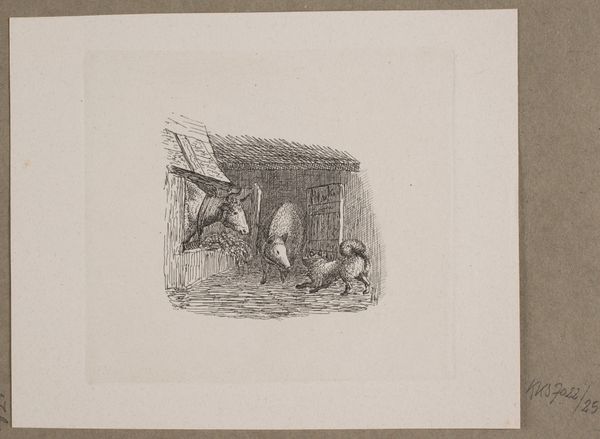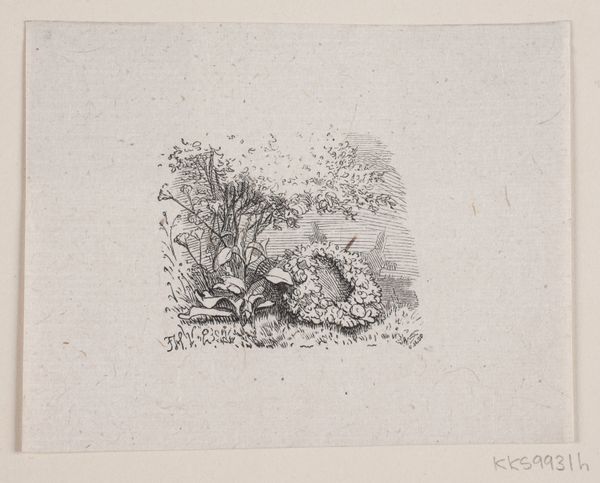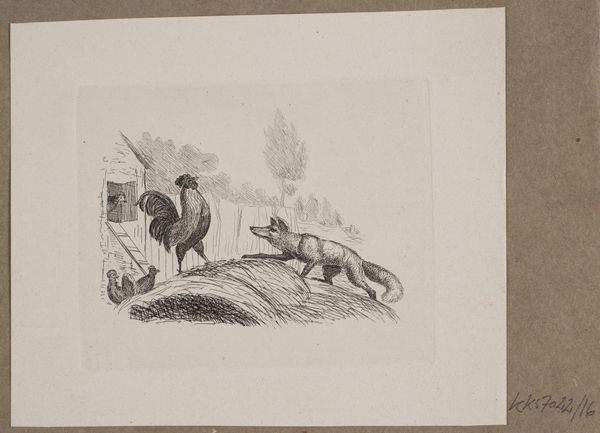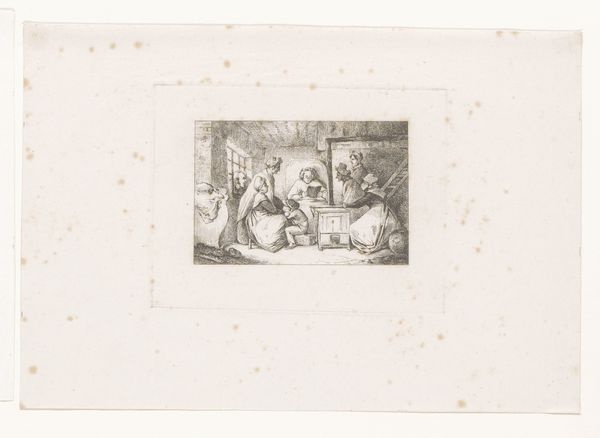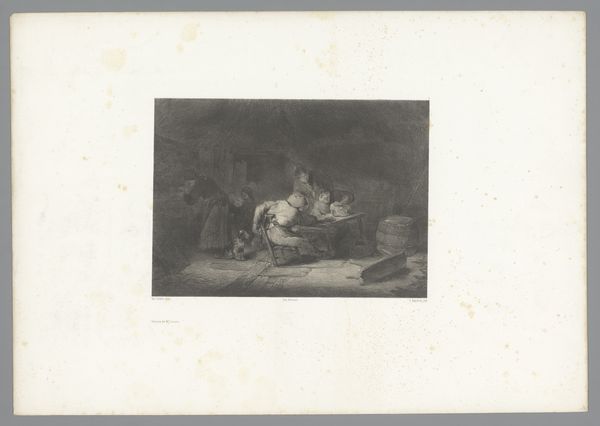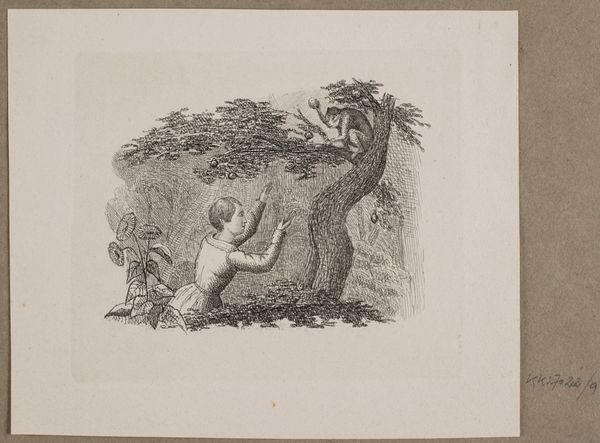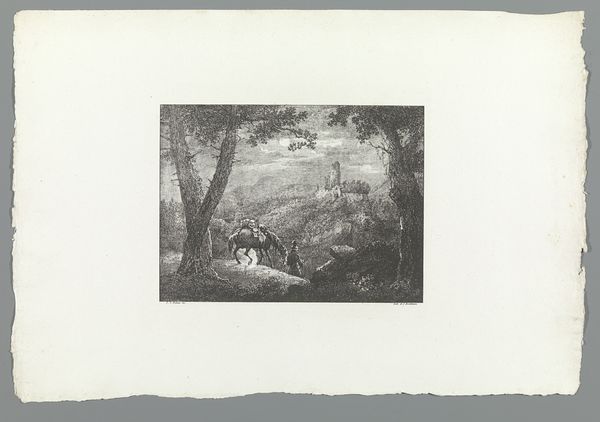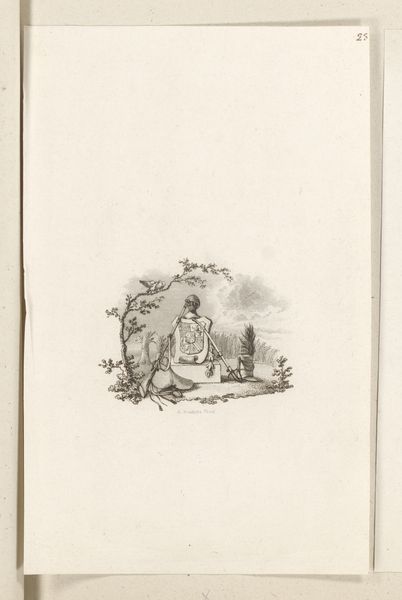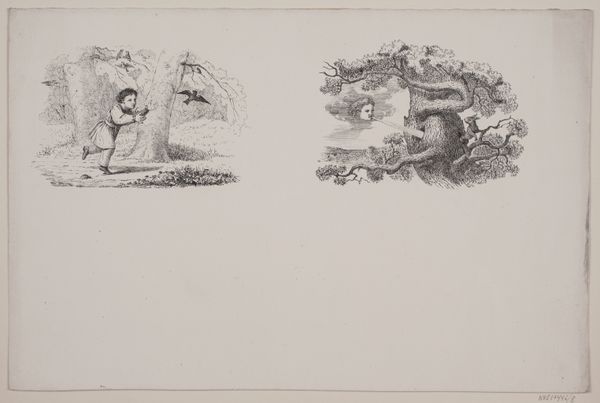
print, engraving
#
narrative-art
# print
#
landscape
#
figuration
#
romanticism
#
line
#
genre-painting
#
engraving
Dimensions: 88 mm (height) x 110 mm (width) (plademaal)
Editor: This is an engraving by Vilhelm Kyhn from 1838, created as an illustration for O. Specter’s “Fabler for Børn.” It's a simple image with a fox outside a coop with poultry inside. It feels quite theatrical and the fox's gaze is piercing. What do you see in this piece? Curator: I see a commentary on societal structures and the portrayal of power dynamics within them. The fox, often depicted as cunning and predatory, stands outside a clearly delineated space, a farm building that represents domesticity and perhaps the bourgeoisie. Consider how Kyhn’s decision to depict this scene speaks to the perceived threat of the 'outsider' to established societal norms. Does this resonate with other imagery from the period, can you think of other foxes or similar subjects in visual art? Editor: That’s an interesting point. The Romantic era did idealize nature, but there was also this fear of the untamed wilderness disrupting order. Do you think the artist is simply reflecting this tension, or is there a specific political message? Curator: I'd say it's likely both. This illustration is from 1838; we see rising bourgeois power throughout Europe. Romanticism's inherent duality—embracing nature, but fearing chaos—can be read here. Perhaps Kyhn used this image to hint at social anxieties, or even critiques of the rigid social structures, by illustrating a fox eyeing up domesticated poultry. I encourage you to ask, is there any way that this print helped consolidate particular class values? Editor: So, the fox isn't just a fox. It’s representative of social unease during that period! Curator: Exactly. Kyhn is employing recognizable visual vocabulary to speak to societal conditions, and that helps make these small prints vital artifacts for historians. Editor: That makes the engraving far more interesting than it appeared at first glance. I'll never look at a fox the same way!
Comments
No comments
Be the first to comment and join the conversation on the ultimate creative platform.
